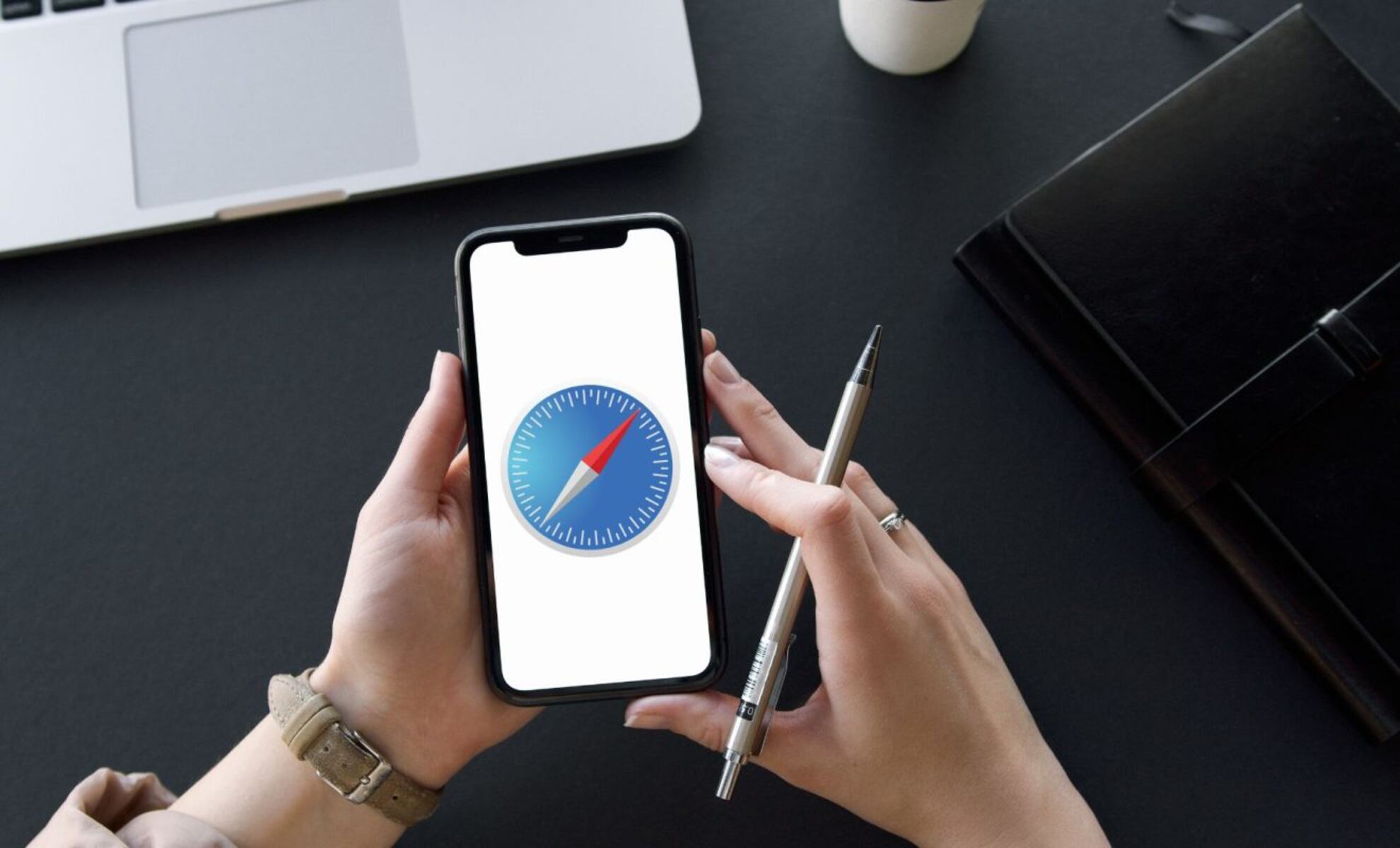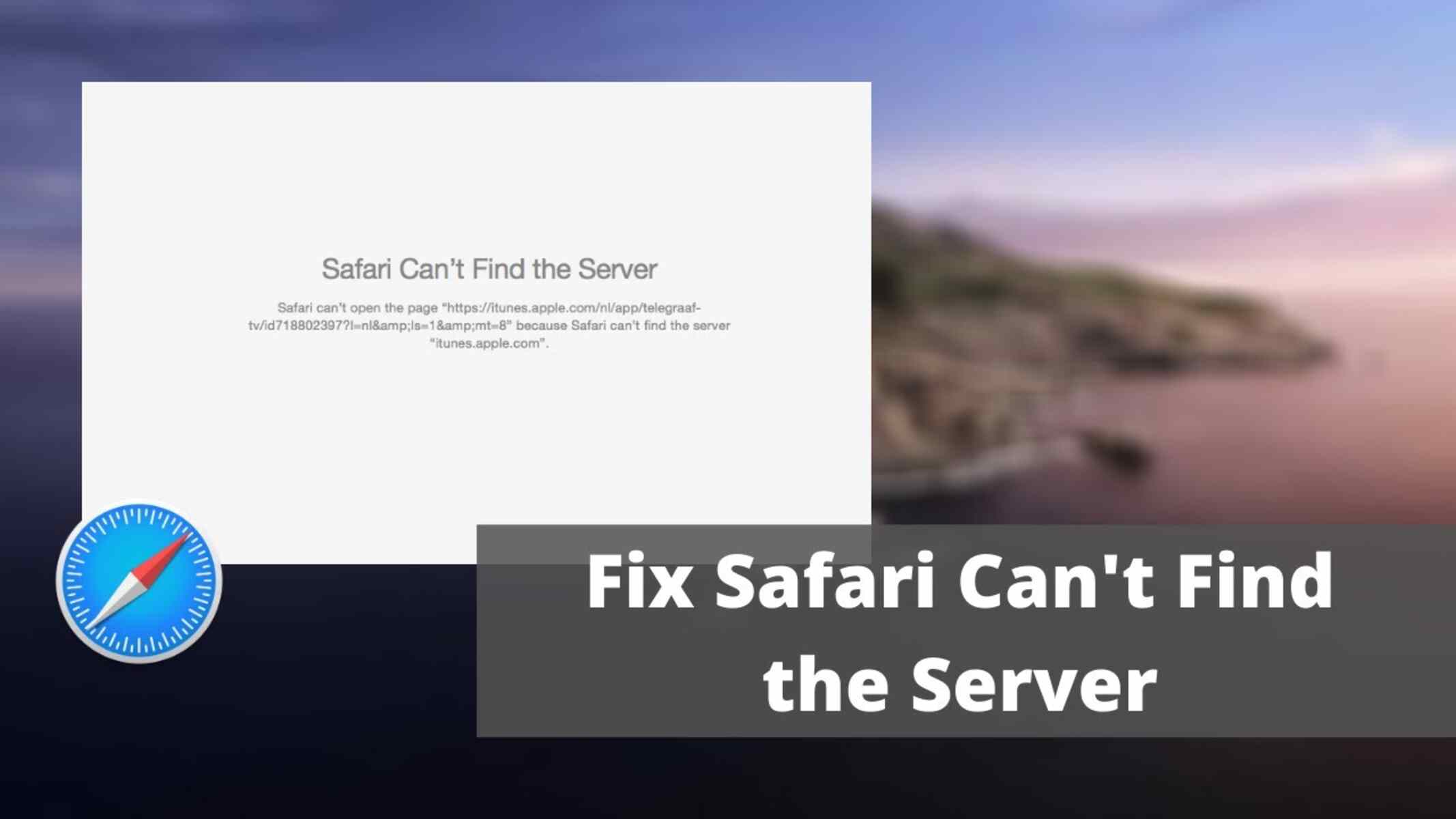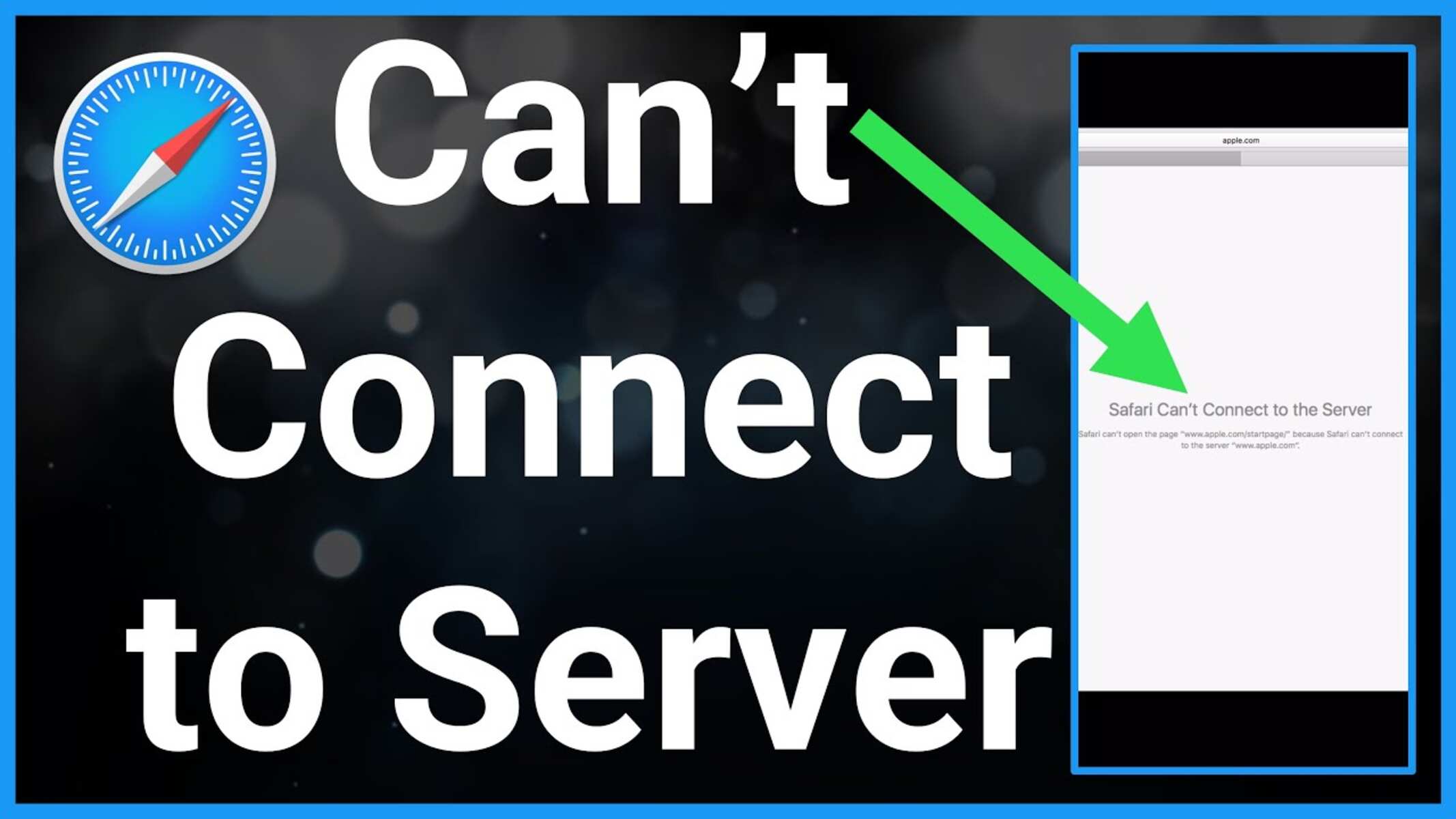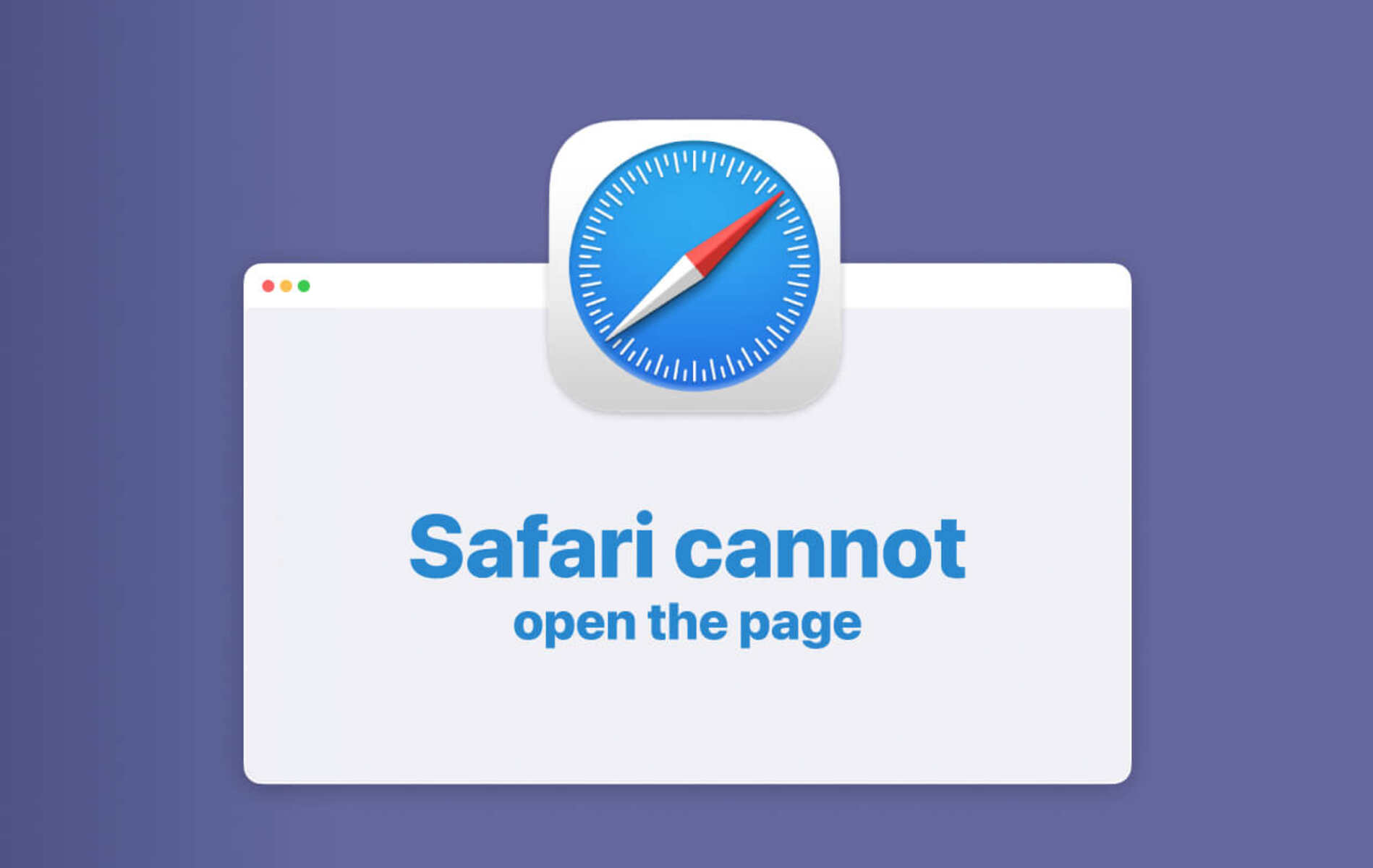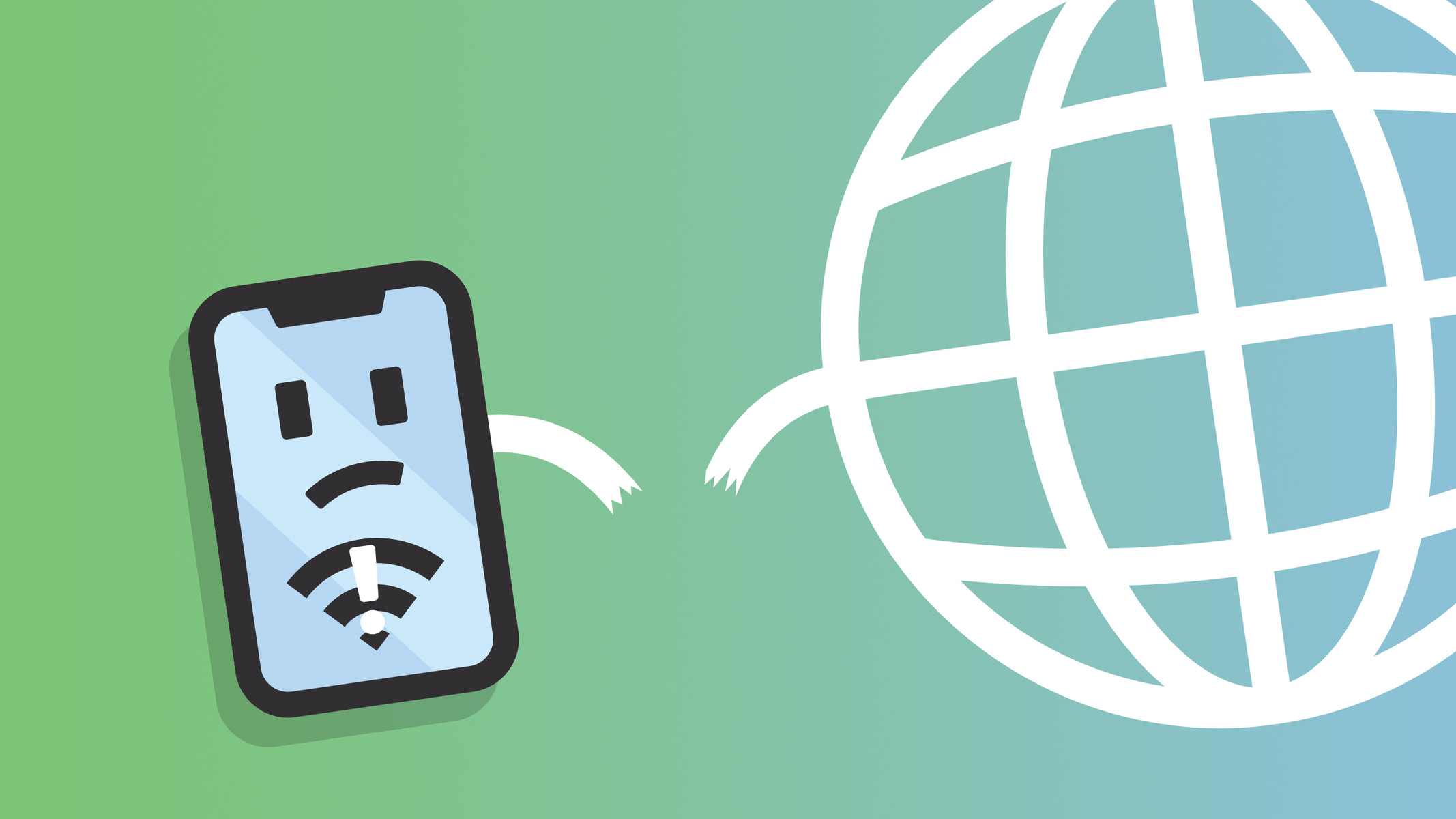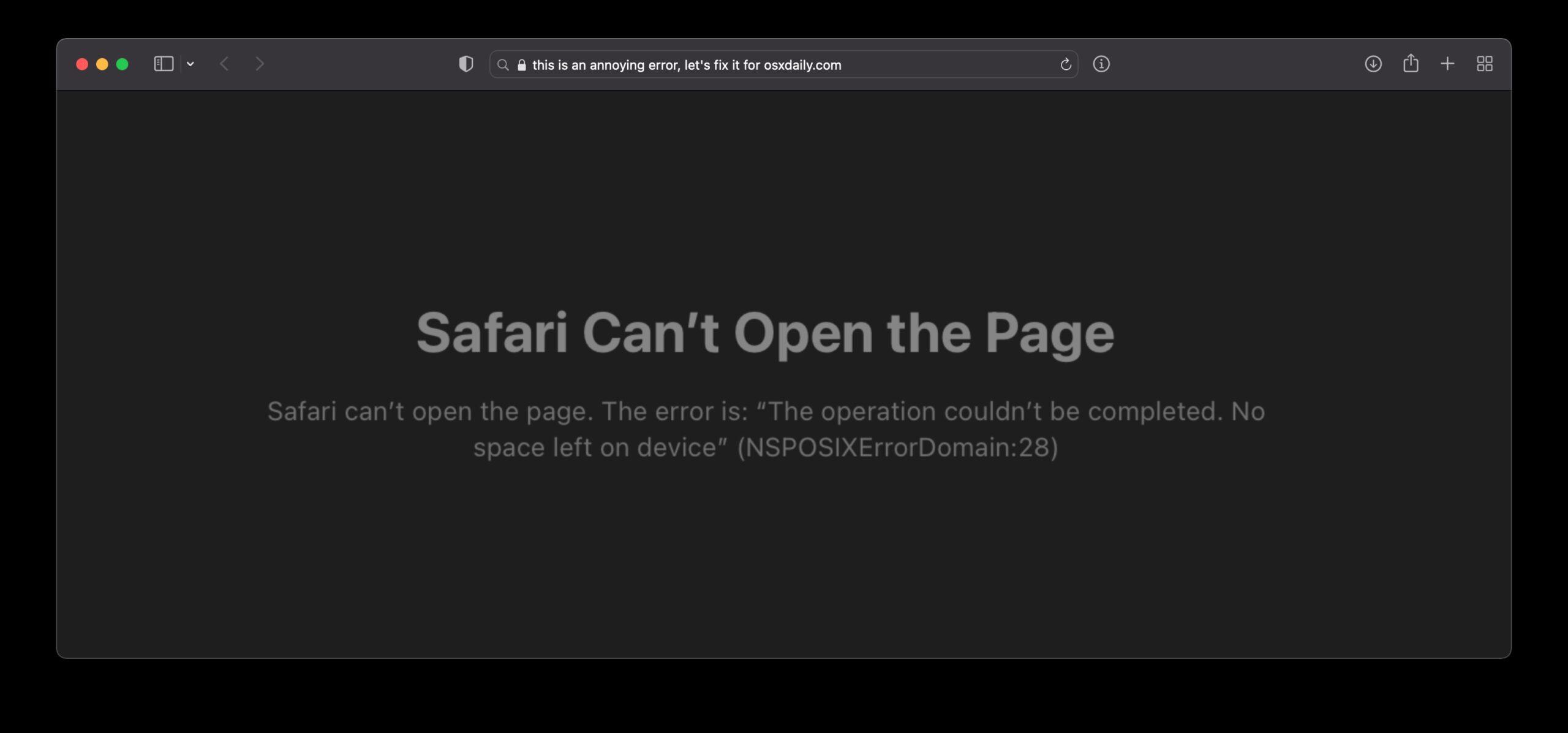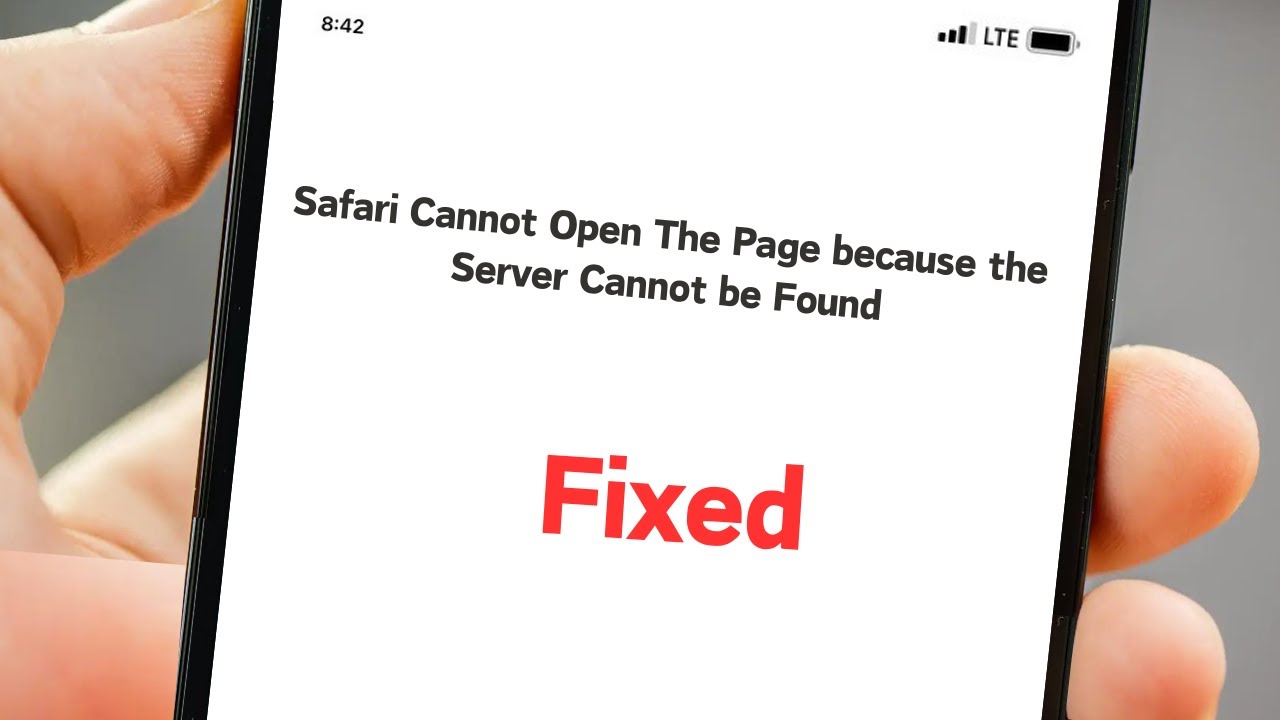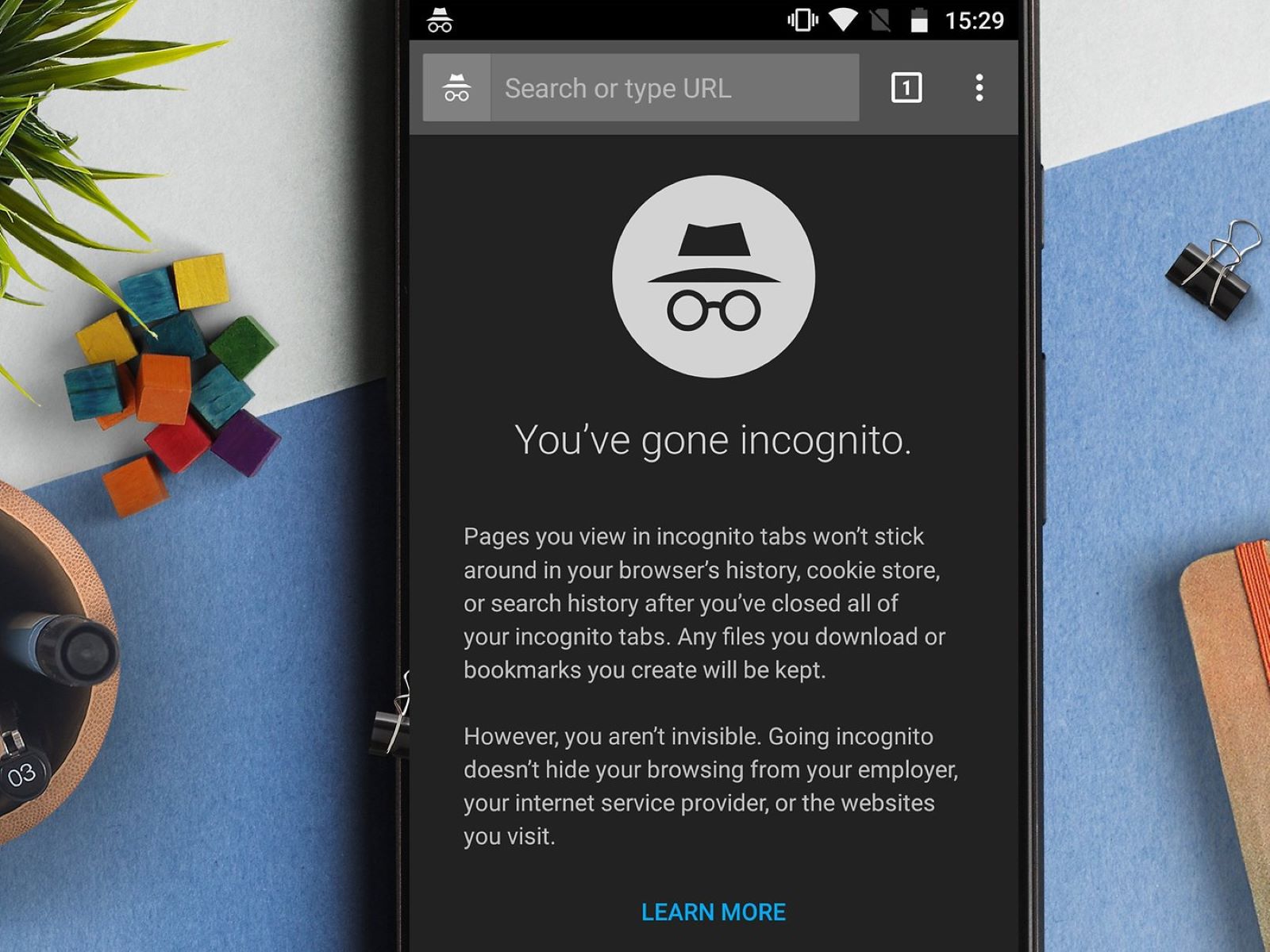Common Causes of Safari Cannot Connect to Server
Encountering the "Safari cannot connect to server" error can be frustrating, especially when you're eager to access a website or complete an online task. Understanding the common causes behind this issue can help you troubleshoot and resolve it effectively. Here are the primary factors that can lead to Safari's inability to connect to a server:
-
Internet Connection Issues: A weak or unstable internet connection is one of the most prevalent reasons for Safari's server connectivity problems. Whether you're using Wi-Fi or cellular data, fluctuations in signal strength or network disruptions can hinder Safari's ability to establish a connection with the intended server.
-
DNS Configuration Problems: The Domain Name System (DNS) plays a crucial role in translating domain names into IP addresses, allowing your device to locate and connect to the appropriate servers. If there are issues with your DNS settings, such as incorrect configurations or outdated records, Safari may struggle to resolve the server's domain name, resulting in the connection error.
-
Server Unavailability: Sometimes, the server hosting the website you're trying to access may be temporarily unavailable. This could be due to maintenance, high traffic volumes, or technical issues on the server's end. When Safari cannot establish a connection with the server, it may display an error message indicating the server's unavailability.
-
Firewall or Security Software: Overly restrictive firewall settings or aggressive security software on your device can interfere with Safari's ability to connect to servers. These security measures may block outgoing connections or restrict access to certain websites, leading to the "Safari cannot connect to server" error.
-
Outdated Safari Browser: Using an outdated version of the Safari browser can also contribute to connectivity issues. Newer web technologies and security protocols may not be supported by older browser versions, causing compatibility issues that prevent Safari from connecting to servers effectively.
Understanding these common causes can provide valuable insights when troubleshooting the "Safari cannot connect to server" error. By addressing the underlying factors contributing to this issue, you can take targeted steps to restore Safari's connectivity and enjoy seamless browsing experiences.
Troubleshooting Steps for Safari Connection Issues
When faced with the frustrating "Safari cannot connect to server" error, it's essential to approach the situation systematically. By following a series of troubleshooting steps, you can identify and address the underlying issues that are impeding Safari's ability to establish a connection with servers. Here's a comprehensive guide to troubleshooting Safari connection issues:
-
Check Your Internet Connection: Begin by verifying the status of your internet connection. If you're using Wi-Fi, ensure that you're within range of the router and that the signal strength is adequate. For cellular data, confirm that you have a stable network connection. Restarting your router or switching to a different network can also help rule out connectivity issues.
-
Clear Safari's Cache and Cookies: Accumulated cache and cookies in Safari can sometimes interfere with its ability to connect to servers. Navigate to Safari's settings and clear the browsing data, including the cache and cookies. This can help eliminate any corrupted or outdated data that might be hindering the connection process.
-
Restart Safari and Revisit the Website: Close the Safari browser completely and relaunch it. Attempt to revisit the website that initially triggered the connection error. Sometimes, a simple restart can resolve temporary glitches and restore connectivity.
-
Verify DNS Settings: Check the DNS settings on your device to ensure they are configured correctly. If you suspect DNS-related issues, consider switching to a different DNS server or resetting the DNS settings to their default values.
-
Disable Firewall and Security Software: Temporarily disable any firewall or security software that may be overly restrictive. These programs can sometimes block Safari's access to certain servers. By disabling them temporarily, you can determine if they are contributing to the connection problem.
-
Update Safari and Operating System: Ensure that you are using the latest version of Safari and that your device's operating system is up to date. Software updates often include bug fixes and security enhancements that can improve Safari's connectivity and overall performance.
-
Try a Different Browser: If the issue persists, try accessing the website using a different web browser. This can help determine if the problem is specific to Safari or if it is more widespread.
By systematically working through these troubleshooting steps, you can isolate the root cause of the "Safari cannot connect to server" error and take targeted measures to resolve it. Whether it's addressing network issues, clearing browser data, or adjusting security settings, a methodical approach can lead to a successful resolution of Safari's connection problems.
How to Fix Safari Cannot Connect to Server on Mac
Resolving the "Safari cannot connect to server" issue on your Mac involves a series of targeted steps to address potential underlying causes. Here's a comprehensive guide to troubleshooting and fixing this connectivity problem:
1. Check Network Connectivity:
Begin by verifying the status of your internet connection. Ensure that your Mac is connected to a stable Wi-Fi network or has a reliable Ethernet connection. If using Wi-Fi, check the signal strength and proximity to the router. Consider restarting your router or connecting to a different network to rule out connectivity issues.
2. Clear Safari's Cache and Cookies:
Accumulated cache and cookies in Safari can sometimes hinder its ability to connect to servers. Navigate to Safari's settings, access the Privacy tab, and select "Manage Website Data." Remove any stored data related to the affected websites. Additionally, clear the browsing history to eliminate any potential conflicts.
3. Reset DNS Settings:
Check and reset the Domain Name System (DNS) settings on your Mac. Navigate to System Preferences, select Network, choose your active network connection (Wi-Fi or Ethernet), and click on "Advanced." In the DNS tab, remove any existing DNS servers and add new ones (such as Google's public DNS: 8.8.8.8 and 8.8.4.4). This can help resolve DNS-related issues that may be impacting Safari's connectivity.
4. Disable Firewall and Security Software:
Temporarily disable any firewall or security software on your Mac to determine if they are impeding Safari's connection to servers. Navigate to System Preferences, select Security & Privacy, and access the Firewall tab to disable the firewall. Additionally, consider temporarily turning off any third-party security software that may be overly restrictive.
5. Update Safari and macOS:
Ensure that you are using the latest version of Safari and that your Mac's operating system is up to date. Check for available updates in the App Store and install any pending Safari or macOS updates. Software updates often include bug fixes and enhancements that can improve Safari's connectivity and overall performance.
6. Restart Your Mac:
A simple restart of your Mac can sometimes resolve temporary glitches and network-related issues. After implementing the aforementioned steps, restart your Mac and relaunch Safari to see if the "Safari cannot connect to server" error has been resolved.
By systematically following these steps, you can effectively troubleshoot and address the "Safari cannot connect to server" issue on your Mac, ensuring seamless browsing experiences and unhindered access to websites.
How to Fix Safari Cannot Connect to Server on iPhone/iPad
Encountering the "Safari cannot connect to server" error on your iPhone or iPad can disrupt your browsing experience and hinder access to essential websites. Fortunately, addressing this issue involves a series of targeted steps that can effectively resolve connectivity problems. Here's a comprehensive guide to troubleshooting and fixing the "Safari cannot connect to server" error on your iPhone or iPad:
1. Check Network Connectivity:
Begin by ensuring that your iPhone or iPad is connected to a stable and reliable network. If using Wi-Fi, verify that you are within range of the router and that the signal strength is sufficient. For cellular data connections, confirm that you have a strong network signal. Consider switching to a different network or restarting your router to rule out potential connectivity issues.
2. Clear Safari's Cache and Cookies:
Accumulated cache and cookies in Safari can sometimes interfere with its ability to connect to servers. To address this, navigate to the Settings app on your iPhone or iPad, scroll down to Safari, and select "Clear History and Website Data." This action will remove stored browsing data, including cache and cookies, which may be contributing to the connection error.
3. Reset Network Settings:
Resetting the network settings on your iPhone or iPad can help resolve underlying connectivity issues. Navigate to Settings, select General, and tap on "Reset." Choose "Reset Network Settings" and confirm your selection. This process will reset Wi-Fi, cellular, and VPN settings, potentially resolving any network-related obstacles that are impeding Safari's server connectivity.
4. Update iOS:
Ensure that your iPhone or iPad is running the latest version of iOS. Software updates often include bug fixes and enhancements that can improve Safari's performance and address connectivity issues. To check for updates, go to Settings, select General, and tap on "Software Update." If an update is available, follow the on-screen instructions to install it.
5. Disable Content Blockers:
If you have content blockers enabled in Safari, they may be preventing the browser from establishing connections to certain servers. Temporarily disable any content blockers by accessing Safari settings, tapping on "Content Blockers," and turning off the relevant blockers. This can help determine if content blocking is contributing to the connection error.
6. Restart Your iPhone/iPad:
A simple restart of your iPhone or iPad can often resolve temporary glitches and network-related issues. After implementing the aforementioned steps, restart your device and relaunch Safari to see if the "Safari cannot connect to server" error has been resolved.
By systematically following these troubleshooting steps, you can effectively address the "Safari cannot connect to server" error on your iPhone or iPad, ensuring seamless browsing experiences and unhindered access to websites.
How to Fix Safari Cannot Connect to Server on Windows
Resolving the "Safari cannot connect to server" issue on a Windows system involves a systematic approach to address potential underlying causes and restore seamless browsing experiences. Here's a comprehensive guide to troubleshooting and fixing this connectivity problem on Windows:
1. Check Network Connectivity:
Begin by verifying the status of your internet connection on the Windows device. Ensure that you are connected to a stable Wi-Fi network or have a reliable Ethernet connection. If using Wi-Fi, check the signal strength and proximity to the router. Consider restarting your router or connecting to a different network to rule out connectivity issues.
2. Clear Safari's Cache and Cookies:
Accumulated cache and cookies in Safari can sometimes hinder its ability to connect to servers. To address this, open Safari and navigate to the "Safari" menu. Select "Clear History" and choose the appropriate time range. Additionally, click on "Manage Website Data" to remove stored data related to the affected websites. Clearing the browsing history can eliminate any potential conflicts.
3. Reset DNS Settings:
Check and reset the Domain Name System (DNS) settings on your Windows system. Press the Windows key + R, type "ncpa.cpl," and press Enter to open the Network Connections window. Right-click on your active network connection, select Properties, and then double-click on "Internet Protocol Version 4 (TCP/IPv4)." Choose "Use the following DNS server addresses" and enter preferred DNS server addresses, such as Google's public DNS (8.8.8.8 and 8.8.4.4). This can help resolve DNS-related issues that may be impacting Safari's connectivity.
4. Disable Firewall and Security Software:
Temporarily disable any firewall or security software on your Windows system to determine if they are impeding Safari's connection to servers. Open the Control Panel, navigate to System and Security, and then click on Windows Defender Firewall. Select "Turn Windows Defender Firewall on or off" from the left pane and turn off the firewall for both private and public networks. Additionally, consider temporarily turning off any third-party security software that may be overly restrictive.
5. Update Safari and Windows:
Ensure that you are using the latest version of Safari and that your Windows system is up to date. Check for available updates in the Microsoft Store for Safari and in the Settings app for Windows updates. Installing the latest updates can often include bug fixes and enhancements that improve Safari's connectivity and overall performance.
6. Restart Your Windows System:
A simple restart of your Windows system can sometimes resolve temporary glitches and network-related issues. After implementing the aforementioned steps, restart your device and relaunch Safari to see if the "Safari cannot connect to server" error has been resolved.
By systematically following these steps, you can effectively troubleshoot and address the "Safari cannot connect to server" issue on your Windows system, ensuring unhindered access to websites and a seamless browsing experience.







